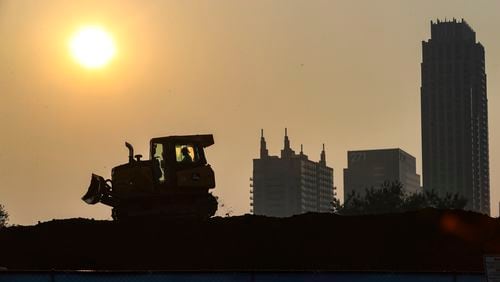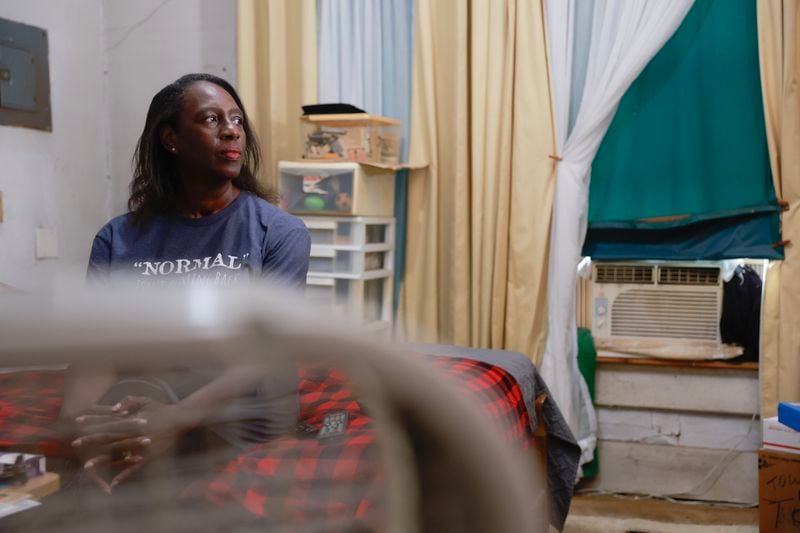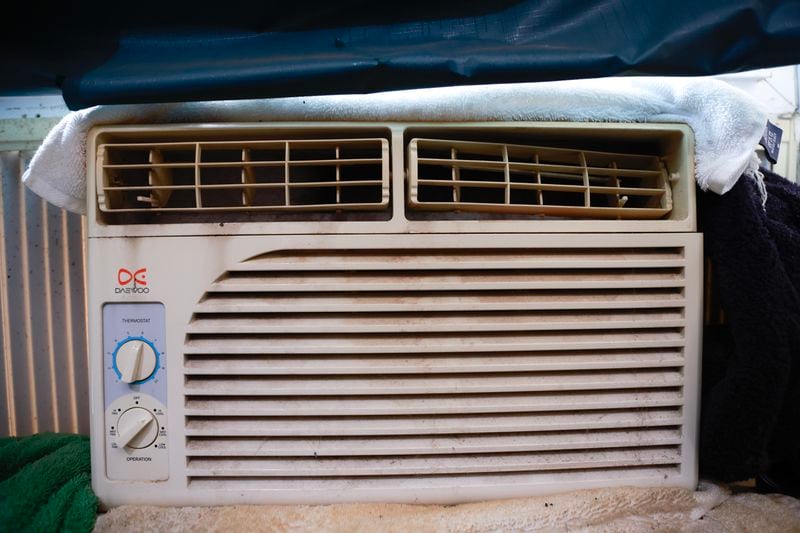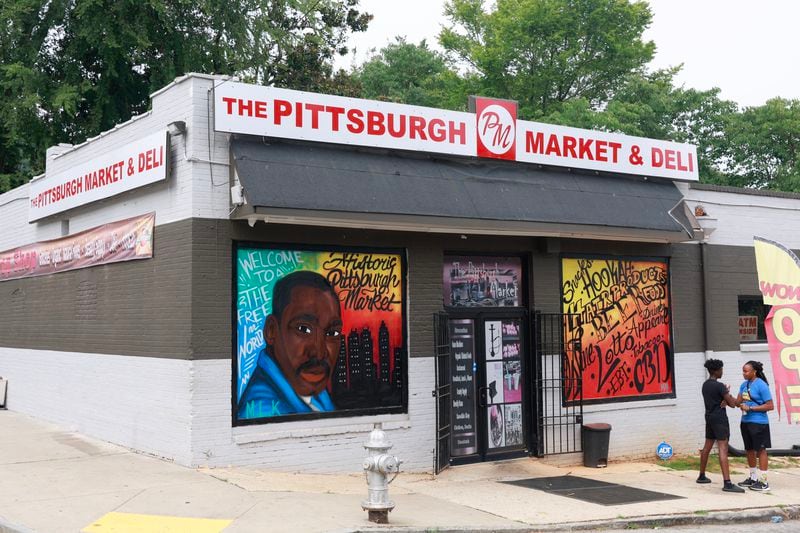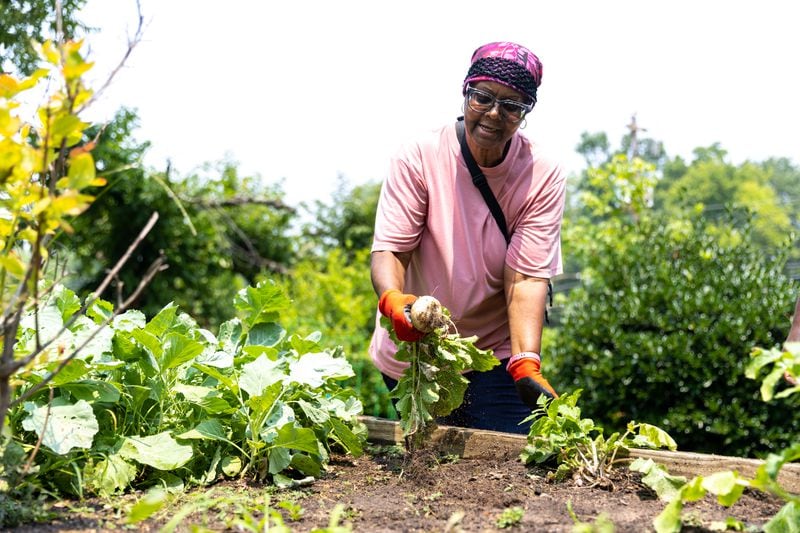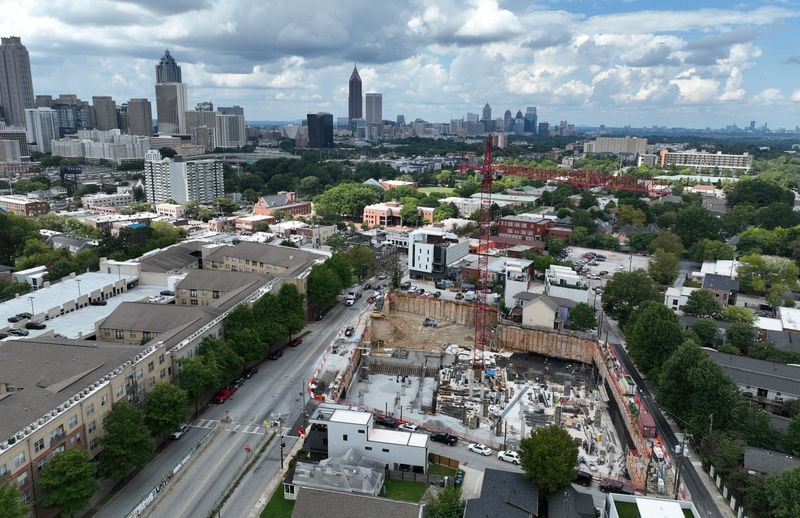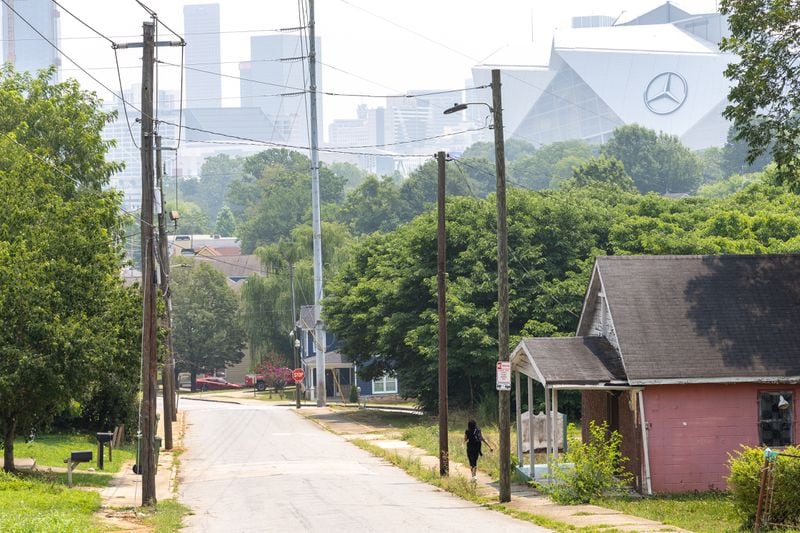All that separates Patricia Bailey from the stifling heat and humidity of a Georgia summer is a single air conditioning unit that hangs from her bedroom window.
Bailey, a 65-year-old retiree, said she navigates scorching summer days by trying as much as possible to stay out of her modest, blue and white house in Atlanta’s Pittsburgh neighborhood.
She visits senior centers to take exercise classes and to spend time with friends. The library offers another haven from the heat, where she browses Facebook and reads in the comfort of air conditioning. Never a fan of cooking, she relies mostly on microwaved meals to keep her range from heating up her house. And at night, she often sleeps on top of the covers, a box fan blowing a few feet from her bed.
“I’ve never felt lightheaded or anything like that,” said Bailey, who says she’s gotten used to the heat. “But if I feel too hot, I’ll come out here [on the porch] with something cold and usually that takes care of it.”
Bailey’s home is among the estimated 30% of houses in Pittsburgh — an historic, predominantly Black neighborhood south of downtown — lacking central cooling systems. That, combined with its older population and sparse tree canopy, makes it one of the most vulnerable communities in the city to extreme heat.
That is just one of the findings from a new citywide assessment released Thursday that evaluated the heat mortality and flood risk in each of the city of Atlanta’s 249 neighborhoods.
The analysis, shared exclusively with The Atlanta Journal-Constitution, was conducted by the climate consulting group, Urban Adapt LLC. The firm is led by a pair of Georgia Tech professors, Brian Stone and Evan Mallen. The research was commissioned by City Councilmembers Liliana Bakhtiari and Matt Westmoreland, who each used $17,500 from their offices’ discretionary funds to pay for the study.
Extreme heat and humidity of the kind Atlanta now regularly experiences — including in recent days — can be dangerous, or even fatal, for certain groups. As temperatures rise, the assessment found heat risk is overwhelmingly concentrated in neighborhoods to the west and south of downtown.
The analysis also provides fresh evidence of the critical role the city’s signature — but threatened — tree canopy plays in cooling the urban landscape and mitigating flooding.
The findings come during an alarming summer marked by a string of climate change-fueled extreme weather and disasters.
In 174 years of recordkeeping, Earth has never had a hotter June than the one just experienced. Earlier this month, record-breaking floods swamped Vermont and other parts of the Northeast. And smoke from wildfires burning in Canada has repeatedly fouled the air hundreds of miles away, including in Atlanta.
Climate change is loading the dice in favor of these kinds of events, and the city needs to take steps to prepare, experts say.
“It’s not just an isolated, hot summer that we’re having. It’s going to get hotter every year,” Stone said. “And we’re going to have to start investing in strategies to manage this to keep this city livable.”
Where heat and flood risk is greatest
In urban environments like Atlanta, researchers have long known that heat risk varies from neighborhood to neighborhood, block to block and even house to house.
Areas shaded by trees are much cooler than ones packed with buildings and heat-absorbing pavement. Historically, parts of the city with less vegetation have been home to more lower-income residents and communities of color.
There have been previous efforts to map temperature variation across Atlanta’s urban heat island, but the new assessment took a different approach by evaluating the chances that a heat wave could turn deadly in each pocket of the city.
Heat contributes to an average of 702 deaths in the U.S. each year, more than any other extreme weather event. But the actual death toll is likely much higher.
One study published in 2020 found roughly 12,000 premature deaths each year in the U.S. are linked to heat exposure. Those most at-risk of complications include children, the elderly, pregnant women and those with certain medical conditions, like heart and lung issues, according to the Centers for Disease Control and Prevention.
For this latest Atlanta study, the researchers simulated what average surface temperatures felt like across every 100-meter tract of the city during one of Atlanta’s hottest summers on record in 2016. Next, they looked at the prevalence of central air conditioning and demographic characteristics, such as average age, to project how residents in each neighborhood might be expected to fare in the face of extreme heat. Based on those factors, the study then assigned each zone a score to represent its overall risk, with 1 being the least vulnerable and 10 being the most.
The assessment found that no neighborhood is more vulnerable to heat than English Avenue, a historically Black area in the shadow of Mercedes-Benz Stadium, near where Martin Luther King, Jr. once lived. Other neighborhoods surrounding downtown, like Vine City, Pittsburgh, Castleberry Hill and Washington Park, are also high on the list.
Many downtown-adjacent neighborhoods also are at high risk for flooding and land in the top-10 most threatened communities for both risk factors. But some of the city’s most affluent locales, like Buckhead Village and Lenox, are also highly vulnerable, owing to their vast expanses of concrete and few trees.
Kim Cobb, now a professor of Earth, environmental and planetary sciences at Brown University, previously worked at Georgia Tech and spent years studying Atlanta’s heat islands. Cobb was not involved with this new assessment, but called the findings it presents “critically important.”
“I think this study applies a pretty innovative approach by combining data and models to give us the best possible insights into heat variation across Atlanta,” she said.
Credit: arvin.temkar@ajc.com
Credit: arvin.temkar@ajc.com
Cherry Heard, 68, a retired medical records clerk, is a regular visitor to Fulton County’s New Horizons Senior Center, which sits on the border of Vine City and English Avenue, two of the city’s most at-risk neighborhoods, according to the report.
As temperatures climbed into the 90s on Tuesday, Heard tended to carrots, turnips, basil and red lettuce in the center’s garden. She said she stays hydrated, wears light clothes, and takes other precautions.
“As long as I don’t stay out there too long, I’m okay,” she said.
A window unit and fans help keep her apartment a comfortable 72 degrees, but she said she worries about other seniors.
Preparing for a hotter future
The researchers also outlined specific steps they say the city could take to help cool neighborhoods, manage storm water runoff and protect residents.
Chief among those recommendations is to plant trees.
“There’s nothing else that is remotely as effective,” Stone said.
A 2018 canopy assessment conducted by Tony Giarrusso, a senior research scientist at Georgia Tech, found that Atlanta’s tree cover stood at roughly 46.5%, though it has almost certainly declined in the years since. To align with City Council’s informal goal of 50% canopy coverage, the new study recommends the city plant 350,000 trees, or an average of about 1,400 per neighborhood. The researchers say plantings should be prioritized in the most vulnerable neighborhoods and alongside impervious surfaces.
Credit: HYOSUB SHIN / AJC
Credit: HYOSUB SHIN / AJC
Stone’s team found adding trees could cool the city significantly, with temperatures potentially falling as much as 4 degrees in some neighborhoods. The report also advocates for protecting existing canopy, because the benefits of plantings would likely take decades to develop as trees mature.
Maintaining those trees would come at a cost of roughly $35 million annually, Stone estimates. That’s a little more than 5% of what the city’s 2024 budget allocated to its water and wastewater management fund.
The assessment says requiring cool roofs, which reflect more sunlight than traditional shingles, on all buildings under four stories would also yield cooling benefits. It also recommends the city offer more cooling centers, especially in vulnerable neighborhoods, and install a citywide heat surveillance system to capture real-time temperature data.
On Thursday, the city of Atlanta announced it would open one cooling center at the Old MLK Natatorium from 11 a.m. to 6 p.m., as “feels like” temperatures were set to climb into the triple digits. The city said the center would also be open on Friday.
The new research has been shared with the city’s chief sustainability officer, Chandra Farley, but it’s unclear what will be done with the report’s recommendations. Mayor Andre Dickens’ office did not make Farley available for an interview.
The report arrives as pressure grows on City Council and Dickens to protect Atlanta’s remaining trees, which experts say are the city’s best defense against heat and flooding.
Credit: Arvin Temkar/AJC
Credit: Arvin Temkar/AJC
Council approved modest changes to Atlanta’s tree protection ordinance, which took effect in April, the first revisions in years. The city has vowed to address more substantial changes in a “phase two” update, but the status of those is unclear.
The new heat assessment has been shared with many city councilmembers and those who commissioned the report, Councilmembers Bakhtiari and Westmoreland, said they were confident the findings would aid the next round of negotiations.
“This is going to help the tree canopy 2.0 conversation,” said Bakhtiari, who represents Edgewood, Kirkwood and other parts of Southeast Atlanta. “That’s an emotionally-fueled conversation when it should be more of a data-fueled one.”
Tree advocates, meanwhile, liked the report’s tree planting recommendations, but added that they must be paired with policy changes that preserve the city’s existing canopy. Kathryn Kolb, a conservationist who leads one of several local tree advocacy groups, said that it will take decades for a tree planted today to grow to a height that would help lower temperatures and reduce flooding.
“It looks like there are some measures [in the report] that would be good to take,” Kolb said. “But will these really have an effect in the face of continued, exponential loss of mature trees, which are the best at providing all of these services?”
A note of disclosure
This coverage is supported by a partnership with 1Earth Fund, the Kendeda Fund and Journalism Funding Partners. You can learn more and support our climate reporting by donating at ajc.com/donate/climate/
